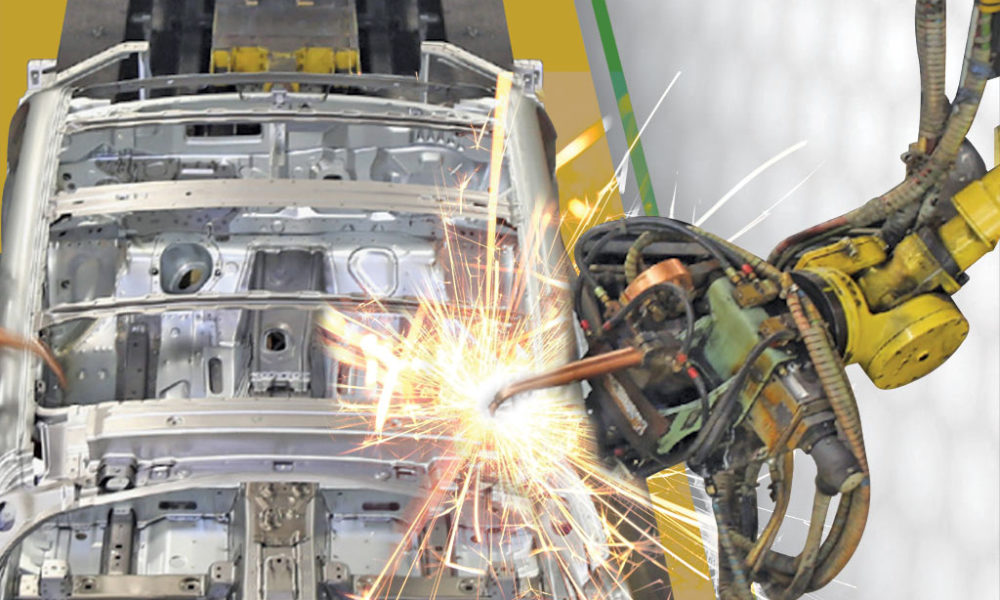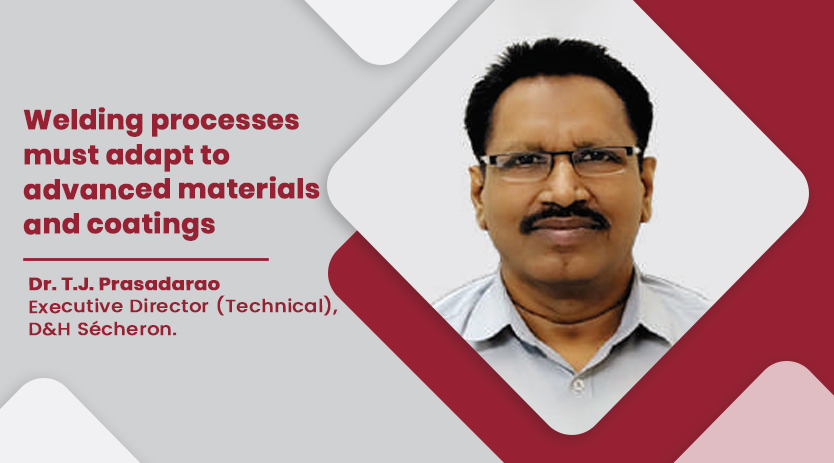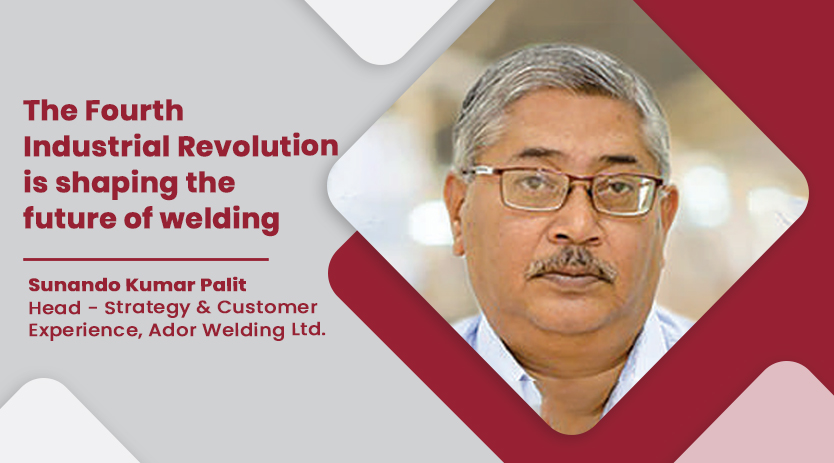Robotic welding: The dawn of a new era
November 1, 2016 5:29 pm
Welding has become a widespread application of robotics, right from car welding to production. Here, we take a look at the advancement in robot welding when it comes to precision manufacturing.
On a broader scale, welding is one process that includes the fusion of two materials through heating, intermixing and then cooling. We are not new to welding and welding techniques. The techniques are centuries old and are constantly evolving. This constant evolving process has given rise to robotic welding and has become increasingly relevant with the industries that are into manufacturing.
Those days when we had the welding process done at the behest of humans are on the verge of passing. Most of the welding had to be done in the hard to reach areas. With the increasing usage of robotic welding, the manufacturing companies have become proficient as it has not just solved the issue of difficult welds, but robotic welding has also increased the standard of welding also making it stronger, reducing the defects.
When asked about the advantages of using robots in welding, Nitin Kakade, Director, Fine Automation Robotics (I) Pvt. Ltd says, “The process is deskilled. The consistency is achieved for the end product. The cycle time automatically reduces. The quality is improved as there is no manual intervention.”
For Dewang Kapadia, CEO, Cloos India Welding Technology Private Limited, robotic welding plays a crucial role in the area of arc welding. Speaking about the advantages in robotic welding when it comes to arc welding, he says, “Robotic arc welding is a more consistent process throughout the welding length and provide impeccable repeatability, providing higher quality welds. Robots can also save workers from health hazards by limiting exposure to fumes and decreasing risk of arc burn. Robot welding decreases cycle times and enhances efficiency. The return on investment (ROI) is worth every rupee spent on an arc welding robot.”
Sanjay Kulkarni, Managing Director, Pilz India says, “There are many reasons for automating welding processes which provide many benefits, including faster, consistent cycle times, no break in production, and ensuring the safety during the hazardous welding process. The robot weld ensures increase in productivity as they move faster than the humans and have consistent cycle time.”
“Other advantages are better quality and accuracy which is the result of consistent motion of the welding gun as it moves with same speed every time a part is being welded. Above all, welding is a very risky process which involves flash, fumes and sparks. With robotic welding, you will protect workers and reduce insurance and accident related costs considerably.”
The current trends in the robotic automation sector are concentrated on the manufacture of the products at a very high production level at relatively lower costs. However, further research in this area is going on to bring out more positive changes in the welding sector. As said earlier, welding is one such area that meets development every day since its discovery.
“Two wheel, four wheel industry uses robot for smallest of fabrication which they are doing. Even people are using the robots for welding for locomotive components, aerospace. Nowadays, to avoid dependency on skilled labour where ever there is fabrication people utilize automation”, Kakade speaks about the scope of robots in welding.
With the scope of robotic welding not restricted to these areas, there are also other segments where there is a visible scope for robotic welding. Picking up on those lines, Kapadia adds, “Arc welding is one such area where there is lots of scope for robotic welding. Arc Welding Robots are being used in India extensively in welding of sub-assemblies for Automotive, earth moving machines, cranes, forklifts, defence tanks, railway bogies, electrical boxes from Stainless Steel, pressure vessels, etc. It also finds application in welding of PEB structures, aircraft components, etc. Robotic Arc welding is very popular when serial production is envisaged for limited series of components to be produced in batches periodically.”
Pilz lauds the use of robots in welding. Kulkarni says, “Welding robots find immense scope in Automotive industry, metal industry, electrical and electronic industry. They ensure higher productivity, efficiency, repeatability and reliability. Along with these, they ensure protection of the work force from the hot surfaces in welding.”
Robotic welding is bound to get the things done very quickly. They are precision oriented and hence they are bound to make minimum mistakes. The robotic welding can be carried out without interruption all round the day. This in all increases the throughput and the productivity. However, the cost of manual labour can also steep. Manual welding requires time, skill and concentration and also involves a lot of risks. It is a very dangerous application. The flash, fumes and the heat collectively make the things taxing and
hazardous. Robotic welding will help protecting the lives of workers and also reduce the costs. Robotic welding endures the hazards of manual welding and increase the production.
Security issues about the workers and the robot- human conflict came into focus due to the tragic incident at the Manesar factory. The post mortem of a 23-year-old factory worker, Ramji Lal, who died in an auto component manufacturing factory clearly concluded that 23-year-old had died after
his ribs and abdominal region were completely crushed by the arm of an industrial robot installed in SKH metals. He died within around 20-30 minutes of the incident.
What had exactly happened was that the worker had come too close to the robotic arm clearly concluded that 23-year-old Ramji Lal had died after his ribs and abdominal region were completely crushed by the arm of an industrial robot installed in SKH metals. He died within around 20-30 minutes of the incident.
When asked about how safe it is to use robots in manufacturing facility, Kakade refused to comment upon the incident.“ However, All over people are going in for robot automation and never there is problem “, he claimed.
Kapadia, feels that such incidents are a rarity and never stand as a point to be raised against use of robots for welding. He says, “Robots for manufacturing industry are built with strict safety norms set by various associations around the world. Each manufacturer of Robot generally has further special safety features to prevent accident. I cannot comment on the specific incidence, but I feel such incidence is very rare and never a point used against use of Robots for welding. The new upcoming product trends like Autonomous (driverless) Cars and Ships draw much of their safety standards and ethical use referring to Robot Safety and ethics standards.”
Speaking about the Manesar incident, Kulkarni says, “It was very saddening to know about the incident of Manesar Factory. Such incidents can be avoided ensuring robotic safety in manufacturing plant by safeguarding robotic cells, using safe guard monitoring devices and implementation of LoTo practices.”
“As a safety automation company, Pilz provides complete solutions for robotic safety which can be implemented with using Pilz components and systems. Along with this we provide robot safety training that is tailored to the individual life phases of a robot system. We also conduct Robot safety training in which we provide an understanding of the essential requirements of robot safety to integrators of robotic systems or to those who use the robots in their manufacturing plant”, talks Kulkarni about the initiatives undertaken by Pilz in the context of works safety.
The prominent area where in robotic welding is highly effective is ‘just in time’ production. Such type of production includes the production of high volume products. Automation in this area will also improve the delivery times that typically range from six months or longer. If this new technology is developed, the process can be shortened to being able to produce the pieces at the time they are ordered with no need for delay.
The advances in the changing tides of welding will have an impact on the day to day lives of almost every individual. It is not restricted to the delivery of the products in a smaller time scale, but it has also strengthened the integrity of the automobiles. Welding is a field that is bound to see large advancements in the near future and some of those may even be life altering.
Cookie Consent
We use cookies to personalize your experience. By continuing to visit this website you agree to our Terms & Conditions, Privacy Policy and Cookie Policy.
















